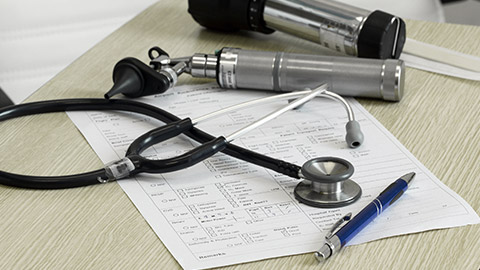Maintaining records in an animal care facility is crucial for ensuring the health, safety, and well-being of the animals and managing the facility's operations effectively.
Types of Records you may need to maintain
- Animal Health Records
- Intake and Admission Forms
- Behavioural and Enrichment Forms
- Feeding and Nutrition Records
- Facility and Environmental Records
- Legal and Compliance Records
- Financial and Administrative Records
Best Practice with Record-Keeping
Accuracy and Consistency
- Ensure that all records are accurate and updated regularly. Inconsistent or outdated records can lead to errors in animal care.
- Standardise forms and data entry procedures to ensure consistency across all records.
Confidentiality and Security
- Maintain the confidentiality of sensitive information, such as owner details and medical records, by securing physical and digital records.
- Use password protection and encryption for digital records to prevent unauthorised access.
Organisation and Accessibility
- Organise records logically (e.g., by animal ID, date, or type of record) to ensure that information is easy to find when needed.
- Store physical records securely and organised, and consider using digital record-keeping systems for easier access and backup.
Regular Audits and Reviews
- Conduct regular records audits to ensure accuracy, completeness, and compliance with legal and facility requirements.
- Review records periodically to identify trends or issues that may require attention, such as recurring health problems or supply shortages.
Compliance with Legal Requirements
- Ensure that all records comply with relevant laws and regulations, such as animal welfare legislation and data protection laws.
- Keep records for the legally required duration, and securely dispose of outdated records when appropriate.
Importance of Maintaining Records

- Animal Welfare: Accurate records ensure that animals receive the proper care and treatment based on their individual needs.
- Legal Compliance: Maintaining thorough records helps the facility comply with legal and regulatory requirements, reducing the risk of fines or penalties.
- Operational Efficiency: Well-maintained records enable staff to work more efficiently, reducing errors and improving the quality of care provided.
- Communication: Records facilitate clear communication between staff, supervisors, veterinarians, and animal owners, ensuring that everyone is informed and aligned on the animal’s care.

It is important that client follow-up requirements are identified and documented as directed and that client records are updated and stored by facility policies and procedures. Follow-up requirements may include:
- Home care instructions for a client relating to:
- Behaviour management
- Equipment dimensions or construction
- Feeding and healthcare
- Grooming
- Training or exercise
- After business communication on animal progress at home:
- Behaviour modification progress
- Operation of equipment or other products
- Settling in of a new animal
- Training and exercise plan progress
- Re-booking of services:
- Advising of seminars or training opportunities
- Advising of product or other service special offers
- Reminder of grooming or other appointments
Often, a client will need a follow-up appointment. This instruction will be issued by the attending staff member at the end of the consultation. You may have to ask the staff member concerned if they want a further appointment booked or whether other requirements need to be discussed with the client.
If a follow-up appointment is required, then you will need to identify the timeline required for the appointment and book the client in for the follow-up appointment within the timeline required.
Updating records

Medical records and diagnostic images remain the property of the practice or facility, not the client, and must be retained for legal reasons.
The length of time these records should be maintained varies in different states, and veterinarians must know their local legal requirements.
Clients can request to have their animal history or file sent to another animal care facility. If a copy of the report or image is requested, you should always check with the client that they are happy to send the records.
More recently, all diagnostic images and reports are delivered by computer image; therefore, no physical storage is required for these items. This being said, storage records remain an important aspect of the care of an animal.
You will need to ensure they are stored in the correct manner on the computer and that only those who need access have it. This can be accomplished through restricted access to animal files, client details, and passwords.
Even though you are working with animals, privacy is still important, so you should never discuss the animal or their owner in front of other people or leave paperwork lying around in public areas. This is part of providing a duty of care to both the animal and their owner.
Case Study
Case Study: Maintaining Patient Records in an Animal Care Facility
- Facility: Happy Paws Animal Care
- Role: Veterinary Technician
- Patient: Bella, a 5-year-old Golden Retriever
- Date of Incident: August 5, 2024
Background:
Bella was admitted to Happy Paws Animal Care after her owner noticed she was limping and seemed to be in pain. Upon arrival, Bella's owner filled out an intake form, providing information about Bella's medical history, including her recent surgery for a torn ligament six months ago and her current medication regimen. The veterinary technician, Sarah, was responsible for maintaining Bella’s records during her stay at the facility.
Scenario:
On August 5, 2024, Bella was scheduled for a follow-up examination to assess her recovery from the surgery and determine the cause of her limp. Sarah reviewed Bella’s records before the examination. She noticed that the last entry was from two weeks ago, when Bella was given her regular medication. However, there was no weight documentation, which was crucial to adjusting her medication dosage.
During the examination, Dr. Miller, the veterinarian, asked Sarah for Bella’s recent weight and any notes on her progress. Sarah realized that the weight was missing from the records. To ensure accurate treatment, Sarah weighed Bella immediately, discovering that she had lost 2 kg since her last visit. This weight loss indicated that Bella might need a dosage adjustment for her medication.
Action Taken:
Sarah promptly updated Bella's record with her current weight, noted the weight loss, and included details from the owner’s observations about Bella's behaviour and appetite. She also recorded the veterinarian’s assessment and the decision to adjust Bella's medication.
Sarah then spoke with Bella's owner to explain the changes in her treatment plan and provided a copy of the updated medical records for their reference. She ensured that the records were detailed and accurate, capturing all relevant information to avoid future gaps in Bella’s care.
Outcome:
Because Sarah identified and corrected the gap in Bella's records, the veterinary team could adjust Bella's treatment plan promptly. Bella’s limp improved over the next week, and her recovery progressed as expected. The owner was pleased with the care Bella received and appreciated the detailed updates on her condition.
Lessons Learned:
This case highlighted the importance of meticulous record-keeping in an animal care facility. The initial oversight in documenting Bella’s weight could have led to an incorrect medication dosage, potentially delaying her recovery or causing adverse effects. By maintaining accurate and up-to-date records, the veterinary team ensured that Bella received the best possible care.
Best Practices for Record-Keeping:
- Regular Updates: Always update records immediately after any interaction with the animal, including examinations, treatments, and owner communications.
- Thorough Documentation: Ensure that all relevant information is documented, including weight, behaviour, medications, and any changes in the animal’s condition.
- Review and Verification: Before any examination or treatment, review the animal’s records to verify that all necessary information is available and accurate.
- Communication: Use the records to facilitate clear communication between the veterinary team and the animal’s owner, ensuring everyone is informed about the animal’s care.
